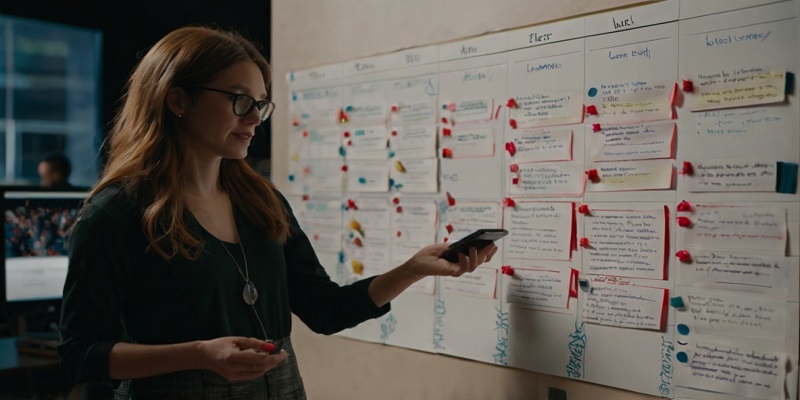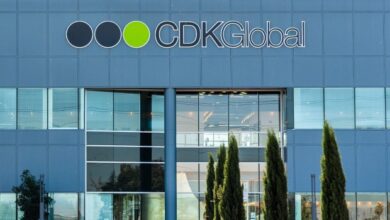UI/UX Designer Collaboration: Working with Developers and Stakeholders

The collaboration between UI/UX designers, developers, and stakeholders is crucial for creating successful products. This synergy ensures that user experiences are not only visually appealing but also functional and aligned with business goals. In this article, we will delve into the dynamics of this collaboration, highlighting best practices and strategies for effective communication and workflow integration.
The Importance of Collaboration
Aligning Goals and Expectations
The first step in any project is to align the goals and expectations of all parties involved. UI/UX designers, developers, and stakeholders each bring unique perspectives and priorities. Designers focus on user experience and visual design, developers on functionality and technical feasibility, and stakeholders on business objectives and market fit. By establishing a common vision, the team can ensure that the final product meets user needs, technical requirements, and business goals.
Enhancing User Experience
Effective collaboration between UI/UX designers and developers is essential for enhancing user experience. Designers create prototypes and wireframes that outline the user journey and interface elements. Developers then translate these designs into functional code. Regular communication and feedback loops are crucial during this process to ensure that the end product remains true to the design vision while being technically sound.
Improving Efficiency
Collaboration also improves efficiency. When designers and developers work closely together, they can identify potential issues early in the development process. This proactive approach reduces the need for costly revisions and accelerates the time-to-market for new products. Furthermore, involving stakeholders early on helps to align the project with business objectives, reducing the likelihood of misaligned priorities and ensuring that resources are used effectively.
Best Practices for Collaboration
Establish Clear Communication Channels
Clear communication is the cornerstone of successful collaboration. Establishing dedicated communication channels, such as regular meetings, project management tools, and instant messaging platforms, helps to keep everyone on the same page. Regular updates and feedback sessions ensure that any issues are promptly addressed, and all team members are aware of the project’s progress.
Use Collaborative Tools
There are numerous tools available that facilitate collaboration between UI/UX designers, developers, and stakeholders. Tools like Figma, Sketch, and Adobe XD allow designers to create and share interactive prototypes. Developers can use version control systems like Git to manage code changes and track progress. Project management tools like Jira, Trello, and Asana help in organizing tasks, setting deadlines, and monitoring project timelines.
Foster a Collaborative Culture
A collaborative culture encourages team members to share ideas, provide feedback, and work together towards common goals. This culture can be fostered by promoting open communication, encouraging cross-functional teamwork, and recognizing the contributions of all team members. Regular team-building activities and workshops can also help to build trust and improve collaboration.
Strategies for Working with Developers
Understand Technical Constraints
UI/UX designers need to understand the technical constraints and capabilities of the developers they are working with. This knowledge helps designers create realistic designs that can be effectively implemented. Regular discussions with developers about the technical feasibility of design elements can prevent potential issues and ensure a smoother development process.
Create Detailed Design Specifications
Providing developers with detailed design specifications is essential for ensuring that the final product matches the design vision. These specifications should include information on layout, colors, fonts, and interactive elements. Including annotations and providing examples of intended interactions can help developers understand the design intent and implement it accurately.
Collaborate on User Testing
User testing is a critical component of the design process. Designers and developers should collaborate on planning and conducting user tests. This collaboration ensures that the tests are designed to gather relevant data and that the findings are used to make informed decisions. Developers can provide insights into technical feasibility, while designers can interpret user feedback to refine the design.
Strategies for Working with Stakeholders
Communicate Design Decisions
Clear communication with stakeholders is vital for ensuring that design decisions align with business objectives. Regular updates and presentations can help stakeholders understand the design process and the rationale behind design choices. Providing stakeholders with prototypes and mockups allows them to visualize the end product and provide meaningful feedback.
Involve Stakeholders Early
Involving stakeholders early in the design process helps to align the project with business goals from the outset. Early involvement also ensures that stakeholders’ feedback is incorporated into the design, reducing the likelihood of major changes later in the project. Regular check-ins and feedback sessions keep stakeholders engaged and informed throughout the project.
Manage Expectations
Managing stakeholders’ expectations is crucial for maintaining a positive working relationship. Being transparent about the design process, potential challenges, and project timelines helps to set realistic expectations. Regular communication and updates help to keep stakeholders informed and reduce the likelihood of misunderstandings.
Case Study:
Successful Collaboration
To illustrate the importance of collaboration between UI/UX designers, developers, and stakeholders, let’s consider a case study of a successful project.
Project Overview
A tech startup aimed to develop a mobile app to help users manage their personal finances. The project involved a team of UI/UX designers, developers, and stakeholders from the finance and marketing departments.
Collaboration Process
Initial Meetings:
The project began with a series of meetings to align goals and expectations. The team discussed the target audience, user needs, and business objectives.
Design Phase:
The designers created wireframes and prototypes, which were shared with developers for feedback on technical feasibility. Stakeholders provided input on the design to ensure it aligned with business goals.
Development Phase:
Developers used the detailed design specifications to build the app. Regular check-ins and feedback sessions ensured that any issues were promptly addressed.
User Testing:
The team conducted user tests to gather feedback on the app’s usability and functionality. The findings were used to make iterative improvements to the design and development.
Final Review:
Before launch, the team conducted a final review to ensure that the app met all design, technical, and business requirements.
Outcome
The collaborative approach resulted in a mobile app that was well-received by users and met the business objectives. The project was completed on time and within budget, demonstrating the effectiveness of close collaboration between UI/UX designers, developers, and stakeholders.
Conclusion
Collaboration between UI/UX designers, developers, and stakeholders is essential for creating successful products. By aligning goals, enhancing user experience, and improving efficiency, teams can deliver products that meet user needs and business objectives. Establishing clear communication channels, using collaborative tools, and fostering a collaborative culture are key strategies for effective collaboration. By understanding technical constraints, creating detailed design specifications, and involving stakeholders early in the process, teams can ensure a smooth and successful project. Through case studies and best practices, we can see the tangible benefits of a collaborative approach in product development.





